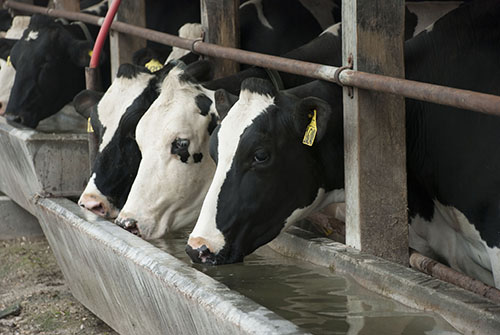
Manure may be animal waste, but a complete waste it is not. The nutrients in manure make it a valuable fertilizer, and on some farms, manure solids are recycled into a comfortable bedding material.
Did you know that manure can also be converted into water? Clean, reusable water? It sure can be, and Dane County in southern Wisconsin is hoping to make use of some fairly new technology to do that.
Dane County has already taken steps to minimize the impact manure (and the phosphorus it contains) has on the environment by installing an anaerobic digester just outside of Middleton, Wis., known as "Cow Power." Owned by Gunderson Health System, manure from three dairies is processed by the digester, and the energy generated is purchased by Madison Gas and Electric (MGE). Approximately 16 million kilowatt hours of electricity are produced annually, enough to power around 2,500 homes.
Late last month, Dane County selected Aqua Innovations of Beloit, Wis., to install a cutting edge manure treatment system at the "Cow Power" site. This new addition would essentially eliminate the phosphorus from cow manure while turning the manure into water clean enough to drink.
As explained on the company's website, converting manure into water is a three-phase approach. First, there is the separation step, which removes about 99 percent of the suspended solids from the liquid. The solids are converted to a drier, concentrated nutrient source suitable for bedding or composting. More than half of the phosphorus is removed at this time.
In the filtration phase, all of the suspended solids are removed from the liquid. The solids are made into a nutrient-rich, concentrated liquid manure ideal for field application. The liquids are converted into a low-odor, nutrient rich liquid ideal for irrigation. Less than 2 percent of the phosphorus remains at this point.
In the purification phase, all solids are separated from the liquid by reverse osmosis. The liquid is converted to clean, purified water that can be re-used or discharged into the environment with no concern.
The project now awaits approval of the 2016 budget, in which Dane County Executive Joe Parisi included $500,000 to pay for the construction of a building to house the system. Money for the actual water treatment equipment was approved in prior budgets.

The author is an associate editor and covers animal health, dairy housing and equipment, and nutrient management. She grew up on a dairy farm near Plymouth, Wis., and previously served as a University of Wisconsin agricultural extension agent. She received a master's degree from North Carolina State University and a bachelor's from University of Wisconsin-Madison.





